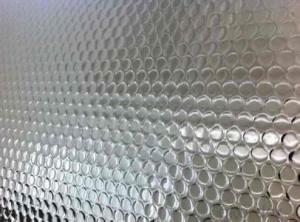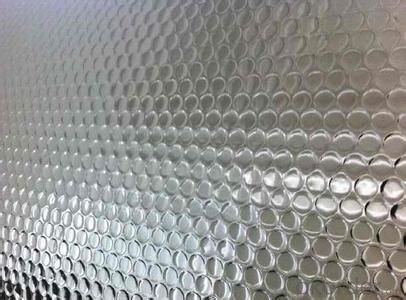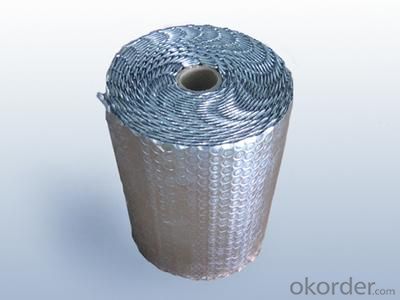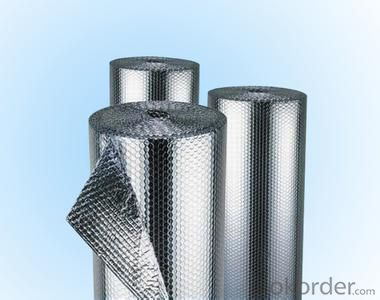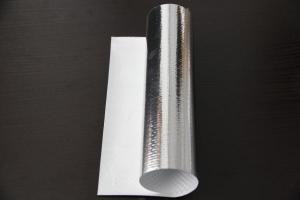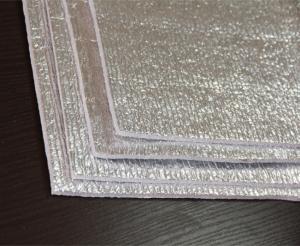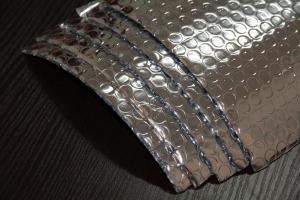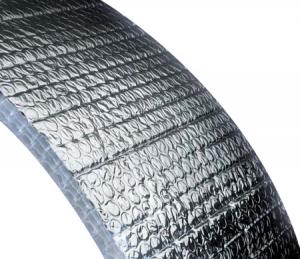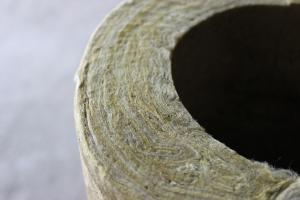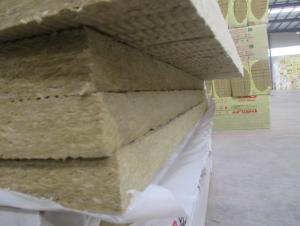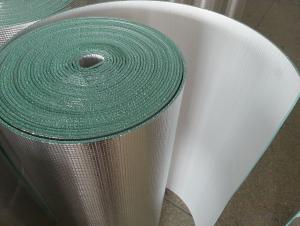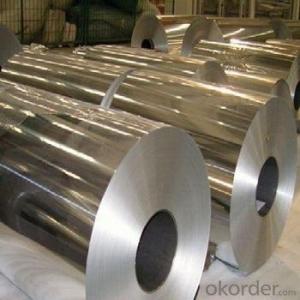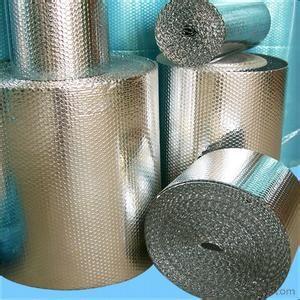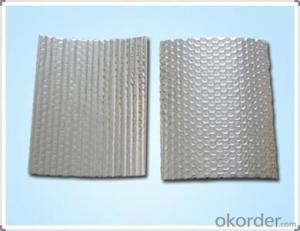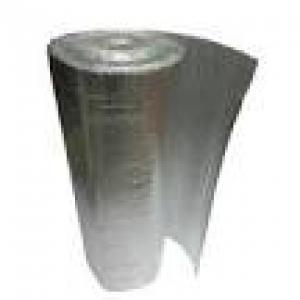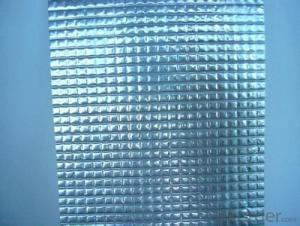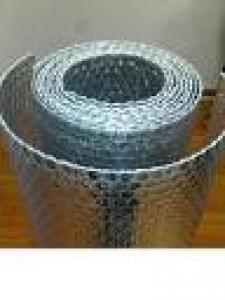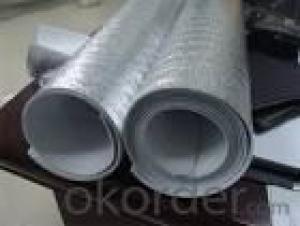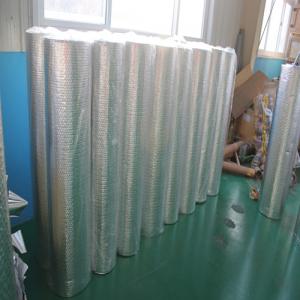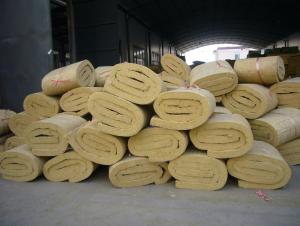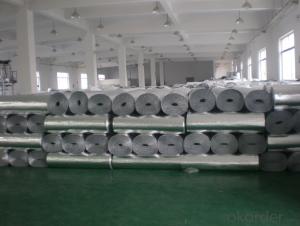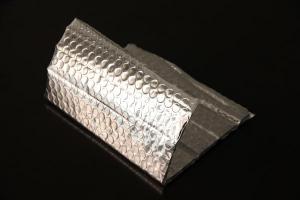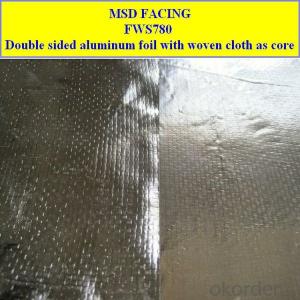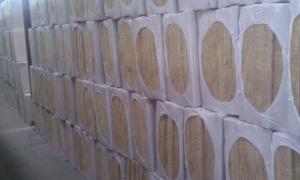Roofing Insulation Adhesive - Aluminum Foil Coated Bubble Insulation Type 5
- Loading Port:
- Shanghai
- Payment Terms:
- TT OR LC
- Min Order Qty:
- 10000 m²
- Supply Capability:
- 100000 m²/month
OKorder Service Pledge
OKorder Financial Service
You Might Also Like
Bubble Insulation Benefits:
Reflects 96% of radiant heat
Non-toxic / Non-carcinogenic
Does not require protective clothing or respirators to install
Durable and lightweight
Does not compress, collapse or disintegrate
Vapor and radon retarder
Easy to cut and install
Permanent and maintenance-free
Does not provide a growth medium or nutritive value for fungus, insects, or rodents
Does not support the growth of mold or mildew
Not affected by moisture or humidity
Lowers heating and cooling costs year round
Bubble Foil Application:
Metal & Steel Buildings
Homes
Roof Underlayments
Cathedral Ceilings
Crawl Spaces
Hot Water Heaters
Basement Walls
Floors
Garage Doors
Concrete slabs
Driveway snow melts
Pole barns
Post frame buildings
Poultry barns
Animal kennels
Temperature sensitive storage areas
Air Bubble Foil Insulation Tech Data:
Material Structure: AL/Bubble/AL | ||
Bubble Size:D10mm*H 4mm(10*2.5/10*4/10*6/20*7/25*10)choose the bubble size | ||
Bubble Weight:0.13kg/m2 ( can be customized ) | ||
Roll Width:1.2m (lenth can be customized) | ||
PROPERTIES | TEST DATA | UNIT |
Thickness | 3.5-4 | mm |
Weight | 250 | g/m2 |
Emissivity | 0.03-0.04 | COEF |
Thermal conductivity | 0.034 | w/m0 |
Apparent Density | 85 | kg/m3 |
Reflectivity | 95-96 | % |
Water Vapour Transmission | 0.013 | g/m2kpa |
Corrosion | doesn't generate | |
Tensile Strength(MD) | 16.98 | Mpa |
Tensile Strength(TD) | 16.5 | Mpa |
- Q: the noise when it rains is very loud. can I place an insulation material under the polycarbonate roof to reduce noise? Thanks
- Sure, depending on the roof space anyway.
- Q: No insulation was installed under roof of my 2 story home. Im not rich but looking for info on installing about 450 ft. up there.
- Based on the geography you are put up insulation rates would differ, I would suggest initially you just call Insulation contractors who offer free home energy audits and ask them to give their estimate , based on the rates you choose one which suits your budget. Usually type of insulation you choose determines your rate, so do a little homework on it
- Q: the roof of my mouth hurts bad.i worked all day with sawdust and insulation yesterday.is this the problem.?
- No it may not be like any type of respiratory disease ,normally this type of soe type of allergy ,if you have any doubt you can consult a doctor but are you suffering from asthma before or any person of your family belongs to this category.
- Q: I live in central florida. I plan on installing R-30 insulation to the floor of my attic. How effective is it to install reflective insulation to the attic on the roof side? Is it worth the price?
- do not insulate your roof,it will cause the roof to get VERY hot,this will damage the roofing,shorten its life,,the temp in your attic should be within 3-4 deg of outside temp,,,insulate the floor Only and have plenty of ventilation
- Q: or in queensland
- I think it is 10 australian doller per hour of 200 sq yd of roofing .It differ state to state
- Q: ... building code max. (R-50)???
- "R" I think stands for "Resistance" factor against heat loss. It resists the heat transfer but doesn't stop it. There is no such thing as perfect insulation. Snow itself is a rather good insulator. So even though you are only losing very little heat, the snow on top of the snow directly on the roof helps trap that heat at the bottom. So the first layer will melt.
- Q: what action should a plumber take?????
- struggling to understand your question! are you talking about a storage tank? what is the problem with the insulation? if it is in the way move it but insulation under a tank is not a problem the tank will need to be insulated any way!
- Q: Can you put fiberglass insulation on the under side of roof tiles in the loft in the house?
- Not between tiles and roof sheathing, but YES on the inside of the sheathing, between the rafters. However, the recommended location is between the rafters on the FLOOR of the loft, unless you plan on using the loft as a living space.
- Q: i live in a tropical country and i need to insulate my roof to block off the heat from the sun...which insulation would best help me? aluminum foil with foam, real foil with foam or PE with foam? pls help...thank u so much!
- Use HDPE foam (high density polyethylene) - possibly with a layer of aluminum foil sandwiched in between. It's also waterproof (polystyrene isn't).
- Q: i have roof insulation but if i add more to the required depth the bottom layer will get compressed. Will it still insulate?
- Yes, but not as well. the air trapped inside it works as an insulator as much as the fill itself. The weight of insulation on top of it will take away some insulating properties, but it's replaced by the insulating properties of the new insulation, so it's a net gain.
Send your message to us
Roofing Insulation Adhesive - Aluminum Foil Coated Bubble Insulation Type 5
- Loading Port:
- Shanghai
- Payment Terms:
- TT OR LC
- Min Order Qty:
- 10000 m²
- Supply Capability:
- 100000 m²/month
OKorder Service Pledge
OKorder Financial Service
Similar products
Hot products
Hot Searches
Related keywords
